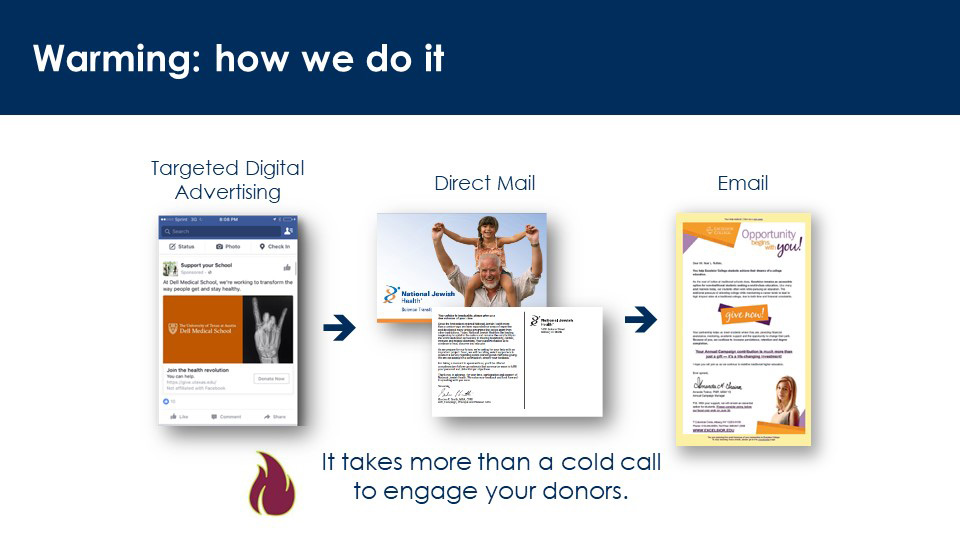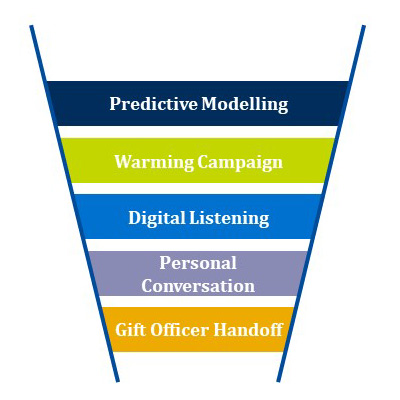fundraising
A Pipeline Drives Every Higher Education Fundraising Success Story

We’re just coming off race week here in Indianapolis, and that’s got me thinking about a key term we’ve been using more and more at RNL: pipeline. It’s a race-changer that really shifts the narrative of higher education fundraising. We tend to focus on one or the other: annual giving or major gifts. This is a real problem, because what we should be focused on is how the two—driven by quality donor engagement—work together in a donor’s experience.
While I don’t really love a fossil fuel metaphor, this one seems apt: While we focus on the speed of philanthropy and the top race contenders, it’s important to remember that something has to fuel the car. And that’s data-driven, sustained engagement to build an engaged donor pipeline.
Major gifts have to start somewhere, and engagement is key.
We get it. You need big gifts, fast. However, when we’ve looked at decades of data on giving, we see one thing continually: over three-quarters of major givers have given annually before their big gift. Prior to a commitment of $25,000 or higher, most major donors have made six or more annual gifts, with some giving for 20+ years. Along with that giving, their volunteer involvement, advocacy, and engagement with your institution gets them ready to give.
With that in mind, how can you quickly lay the foundation that will lead to big gifts? The answer is a coordinated predictive modeling campaign, linked with omnichannel warming. I know that’s a mouthful. What we’re talking about here is starting with data to find the donors most likely and most capable to make big investments. Wealth screening will help, but it’s also important to analyze your engagement data to see who’s been consistently present over the past few years. Then, reach out to these donors with a coordinated campaign across channels like direct mail, email, video messages, and digital advertising.

This provides donors with a context for giving investment. You can communicate the impact of previous gifts, highlight key campaigns and priorities, spotlight recipients of philanthropy, and share stories of other donors. This means that when you take the next step, you won’t be making a cold call. Donors will be ready.
We can listen to higher education donors like we’ve never been able to before.

It’s important to keep track of who is engaging during this warming process. That’s where the digital components really shine in your already-focused pool, enabling your digital listening as donors click, read articles, and even move from direct mail to online exploration with things like QR codes.
The illustration here shows the five key components of a donor pipeline focus that create a better donor experience and maximizes gift officer velocity.
That’s a key component of modern donor pipeline engagement—we can now see so much about how donors are engaging, even getting to the level of using AI to detect their real giving interests. This same technology runs on all of us every day from key brands we engage with, and if done well, this listening can begin to personalize the donor experience.
Qualification has transformed, and it’s time to give your gift officers the best tools to succeed.
You’ve modeled who is most likely to give, and within that group, you have identified who is clicking, reading, and engaging right now with your warming communications. It’s time to reach out with a personal conversation. My modest proposal: cut the time your gift officers spend in qualification with donors by half through personal conversations at scale.
This can be accomplished with your donor experience officers, trained gift officers from outside, or even student ambassadors. What we feel is key to these conversations is really asking questions that allow you to listen and saving, “So, are we in the will?” until the end. These are not quick conversations. They are really about encouraging the donor to talk.
Webinar in 3 minutes: Watch Greta Daniels describe the modern donor pipeline. Then watch the full webinar.
What’s also crucial is collecting what donors say, along with the warming profile information, to do an “insightful handoff” to your gift officers for those who say they’re ready to meet. After this conversation, you will know what the donor really wants to talk about. You can book appointments for the next step and communicate the donor’s top interests, concerns, and insights to the receiving gift officer. If this is done right, it really speeds the process up, shaving a couple of meetings off the average engagement with a major donor.
By the time you’re ready to make an ask, a donor has already communicated a ton to you, and taking the time to integrate this into your conversation planning is crucial. If you don’t have an insightful handoff, you’re going to race out of the pit to the donor unprepared. And we know what a speed violation can do to your race.
Focus on a path to success with donors using the right tools, strategy and a pipeline focus
To quote the Indy Star: “Ericsson wasn’t the best car – until he was.” It’s easy to get caught comparing your donor stats, endowment, and annual giving program to aspirational peers. There will always be shops with bigger staffs, and more whales to hunt for big gifts. However, if you focus on tools for your team, and pay high attention to the donor experience and long-term engagement, you won’t just win today’s race, you’ll change the track forever.
Reach out and we’ll set up a time to talk about the newest, cost-effective tools and strategies to build your donor pipeline. We’re committed to a better donor experience that will allow your gift officer team to drive fast.
Free consultation on your fiscal year planning
Where can you have the biggest impact on donor engagement next fiscal year? What investments will produce the greatest ROI on your fundraising results? Talk with RNL’s experts during a free fiscal year planning consultation.
